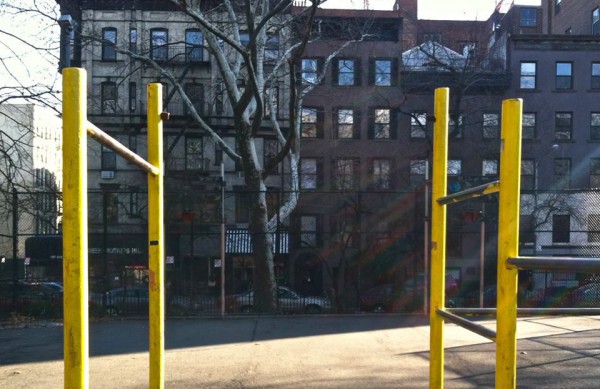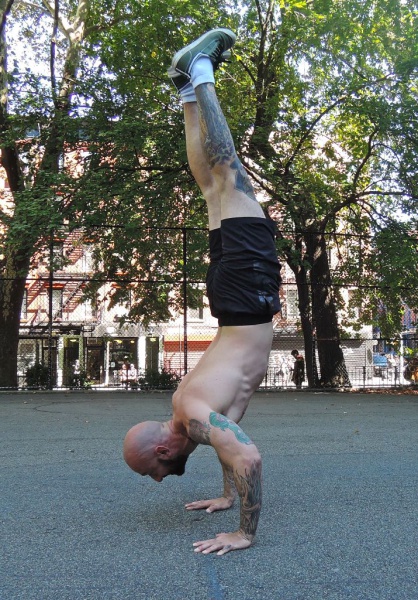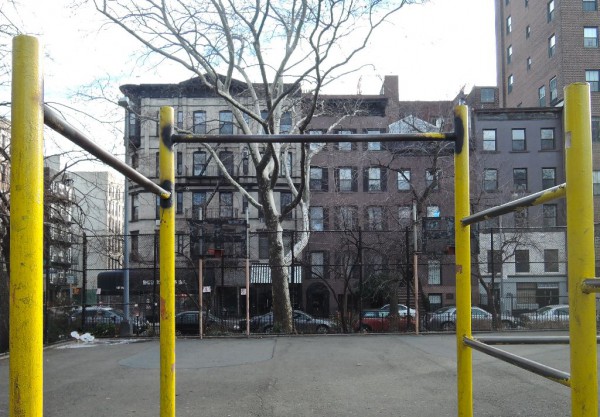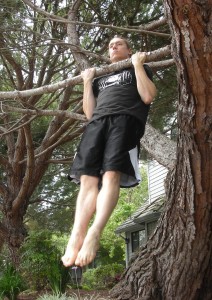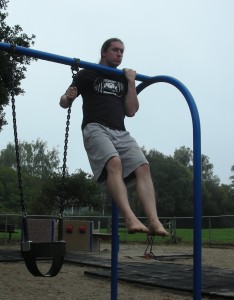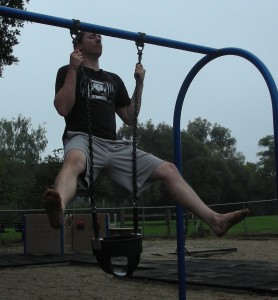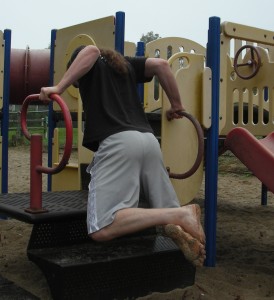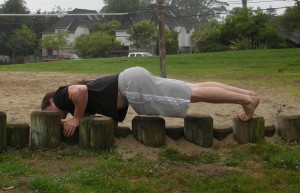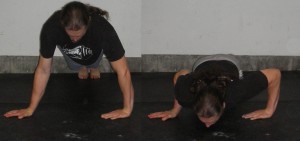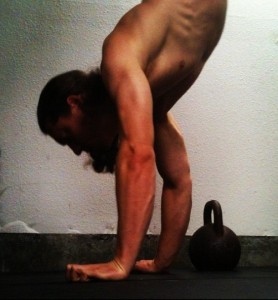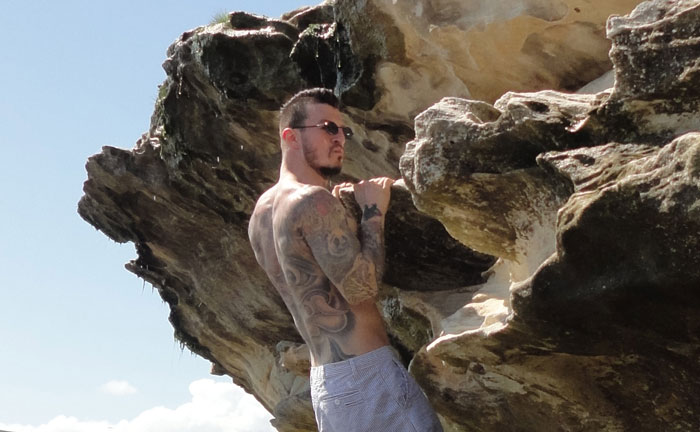
In the world of bodyweight strength training, the mighty pull-up is the indisputable king of upper back exercise. The classic movement is performed when hanging off a straight bar and pulling your body up until your chin surpasses the bar. The practitioner is encouraged to keep his or her entire body tense in order to attain maximum yields, as well as overall control. In fact, this notion of complete tension is present in all Progressive Calisthenics training, as we encourage the body to work hard as a single, cohesive unit, whichever the emphasized muscles may be. In the case of the pull-up, the primary emphasis is on the lats and the biceps.
While there are numerous pull-up variations you can perform on a traditional bar (wide grip, narrow grip and mixed grip, to name only a few), there are also many that don’t employ a bar at all. That’s right, you can use almost anything around you to get a great upper body workout. As I’m fond of saying, you just need something to hang from!
You will find that changing the surface from which you pull causes you to utilize certain parts of your anatomy that you may never have given much thought to training before. These include your hands, forearms, skin, sinews and tendons. Furthermore, without a bar, you are compelled to dial into your creative forces. It’s a workout for the mind as well as the body. This fusion of the physical and mental components is one of the greatest things about the Street Workout phenomenon!
While all of the following alternative grip pull-ups are rather demanding, they’re also a lot of fun. Just make sure you have a solid foundation in classic pull-ups before embarking on this journey. Work hard and enjoy the ride!
1. Ledge Pull-Up
Using a flat ledge instead of a bar eliminates the typical grip (or any conventional “gripping” at all). It forces you to use the strength of your fingers and forearms, as well as the durability of your skin. Because there is no bar, you cannot wrap your fingers around any round surface, making ledge pull-ups one of the best hand workouts you can do. They’re also great for getting over your fear of heights!
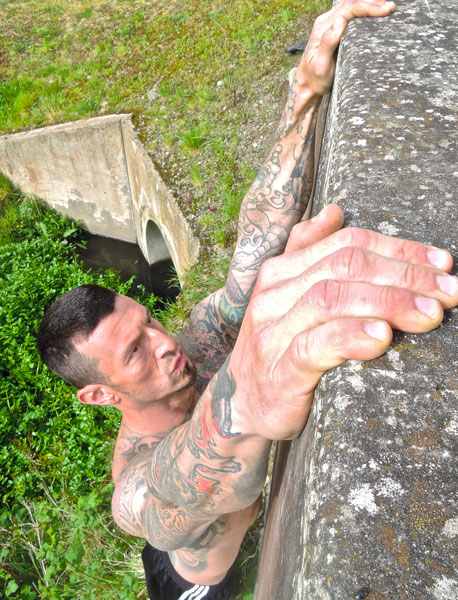
2. Tree Pull-Up
Using a tree instead of a bar is a sure-fire way to toughen up the skin on your hands. Rough tree bark feels very different than smooth metal and the branch will generally be thicker than a bar. Because the tree is sure to be shaped differently than a perfectly straight bar, you may have to “hug” it rather than grasp it. Be prepared for your abs, forearms and even your chest to play a substantial role.
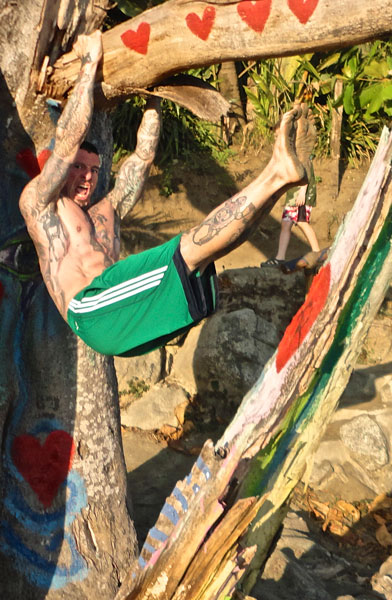
3. Fence Pull-Up
While this variant is super-brutal (and potentially unpleasant) on your fingers, it’s also guaranteed to build real strength where it counts. But beyond the extra lat and finger work, some find the true challenge of the fence pull-up to be the body positioning. This exercise places you directly against the fence, therefore you can only move your body straight up and down, without any backward lean, hip bend or swaying whatsoever. The fence pull-up must be strictly vertical, which places the practitioner in a mechanically difficult angle, thus building tremendous power.
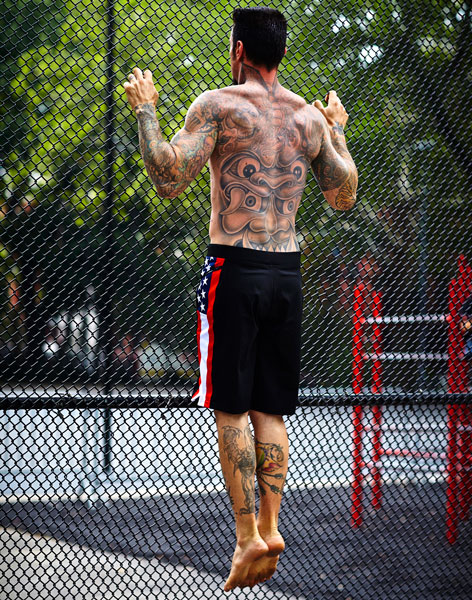
4. Two-Pole Pull-Up
The unique grip of the two-pole pull-up is like nothing you’ve encountered in a standard gym workout. Because you are holding onto the bars with your hands facing outward, the challenge is extreme on your extremities. Additionally, this uncommon hand placement demands extra recruitment of the medial muscles in the upper back, such as the rhomboids.
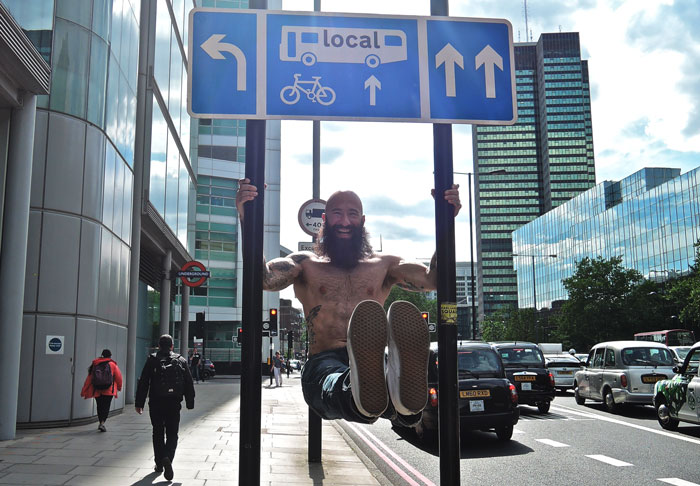
5. Two-Pole Vampire Pull-Up
In this monstrous version of the two-pole pull-up, we do not clasp the poles from the sides. Instead we descend from above. The result is an incredibly intense workout for the hands, forearms, biceps and biceps tendons. Be very afraid.
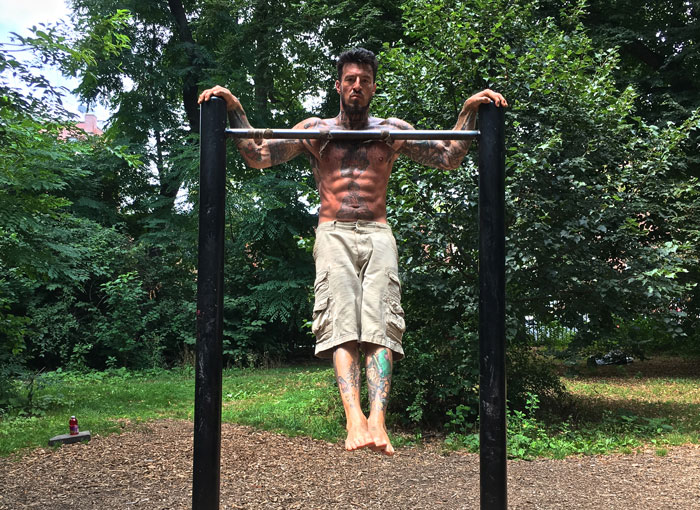
6. Pull-Up On A Random Object
Improvisation is key when you perform a pull-up on a random object. You can find a bus stop, street sign or even a statue or monument and turn it into your own gym. When you do so, you are subject to unexpected grips, questionable leverage and unknown balance. Make sure to survey your site soundly so that you can adapt properly to your environment. Take the bull by the horns!
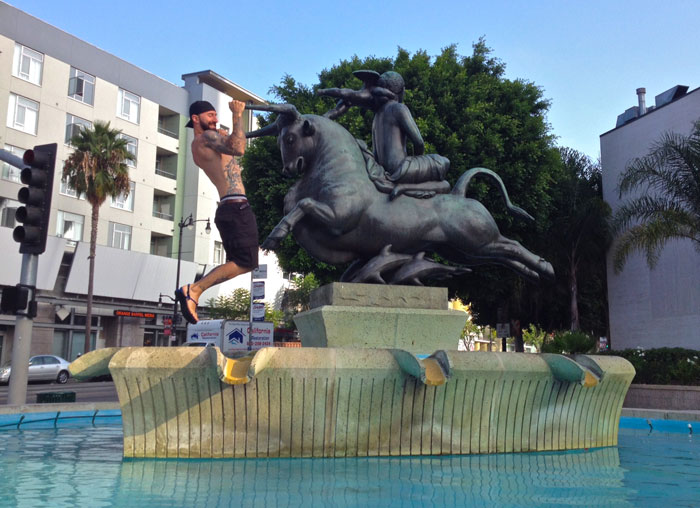
7. Pull-Up On A Partner
This partner calisthenics exercise is a workout for both the puller and the one being pulled upon. Doing a pull-up off of another human is challenging because you must contend with the texture of their skin, which is softer and less sturdy than a metal bar. This leads to instability, forcing the practitioner to recruit more of their core, including the abs and glutes in order to stabilize. It is of note that your partner will have to hold onto something stable, as well as tense their whole body, in order to support your weight. Take this one slow.
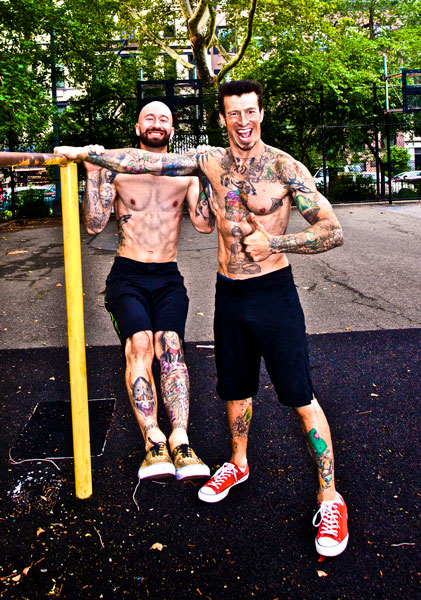
This list is neither the beginning nor the end of the many creative ways you can employ your surroundings to get strong. In the world of Street Workout, the only limits are the ones we impose upon ourselves. So get out there, flex your physical and mental muscles and get creative. You will find that the world is your gym.
Keep the dream alive,
-DK
****
Danny Kavadlo is one of the world’s foremost authorities on calisthenics, nutrition and personal training. He is the author of the Dragon Door titles Strength Rules, Diamond-Cut Abs and Everybody Needs Training. Most recently, he co-authored Street Workout with his brother, Al Kavadlo. Danny is known for his minimalist philosophy, simple approach and motivational talents.
A true in-person experience, Danny is a Master Instructor for Dragon Door’s Progressive Calisthenics Certification. He has been featured in the NY Times, TRAIN, Men’s Fitness and is a regular contributor to Bodybuilding.com. Learn more about Danny at www.DannyTheTrainer.com
